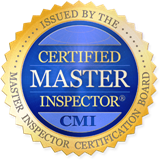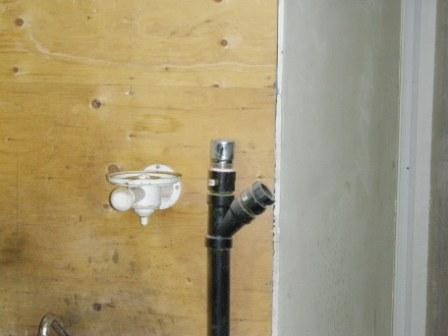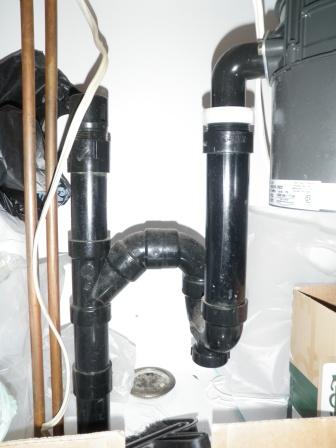

Certified Master Inspector
Providing Residential and Commercial Property Inspections for Muskoka
8 a.m. to 7 p.m., 7 Days a Week
Call 705 205 4663
DoneRight1@live.ca
8 a.m. to 7 p.m., 7 Days a Week
Call 705 205 4663
DoneRight1@live.ca


The first photo is of the chrome model and it was in a commercial building North of Orillia in the Muskoka area.
The second photo is a little harder to see with the white wire partially in front of it where it was installed well under the kitchen sink in a log home I inspected not far from Gravenhurst.


This type of vent is illegal and can be very dangerous. In both the above instances the vent unit itself is not CSA approved for use in residential or commercial applications. They normally sell for 7 to 12 dollars at the home renovation stores. The packaging states quite clearly for use in recreational vehicles only. They are meant to be used in trailers and camper units.
All cheater vents are draw vents but not all draw vents are cheater vents
These type units are referred to as draw vents and there are some draw vents available on the market from plumbing wholesalers costing from thirty to fifty dollars that are CSA approved and are approved for use in limited circumstances under the plumbing codes.
Cheap cheater vents are not safe in a home!
Draw vents, or cheater vents as they are commonly referred to, are often installed by home owners where a wall or ceiling would have to be broken open to run the separate vent pipe to the main stack or where it would necessitate installing another stack as when a new bath is added at the other side of the home from the original. It's an economy thing and a very bad choice. These 7 -12 dollar venting units will fail, when they do it may only stink up the building but it may also be much worse; it could be the cause of an explosion or fire or even the loss of a life.
How draw vents work
In simple terms draw vents work with a spring that holds a flap closed under normal conditions. When a flow of water goes past the short pipe the vent is mounted on, the suction opens the flap and lets water continue to flow past because it has equal pressure on both sides, gravity is pushing the water down the pipe. When the water stops flowing past, the suction stops and the spring forces the flap closed stopping sewer gases from coming back up the fixture and into the home but filling the length of pipe from trap to vent.
Attached to a normal venting pipe which also equalizes the pressure and lets gravity push the water past the vent pipe opening a draw vent allows air behind water to flow out of the fixture. The vent pipe then allows sewer gasses to flow up the vent pipe and out of the home into the open air above the roof. Note the difference between the two. One is open to the air the other has the sewer gasses filling the pipe and blocked from escaping at all.
When it fails, at best it will just be stinky
When a spring or flap gasket fails on a draw vent the sewer gasses enter the home, stinky at best. But, it can be far worse. Sewer gasses cause many deaths each year and not just among sewer workers. Due to several deaths at just one site, Toronto hydro workers were issued gas testers and it became mandatory for any worker entering a below grade vault, where electrical lines often share space with sewer lines, to test for sewer gasses before entry.
Sewer gas is a foul-smelling combination of gases with a predominant presence of methane gas. It is produced by decaying organic material, residential waste and industrial waste, all often found in sewage and septic systems. These dangerous gases, when breathed in, can suffocate the victim to death. They are also highly flammable. But an odour may not be noticeable as a by-product of sewer gas can also be carbon monoxide, which is odourless, colorless and just as deadly.
The big boom
If a pipe to a fixture with a draw vent has direct connection to the sewer or septic system, when it fails the fixture can vent gasses through the fixture trap or the failed vent. If that fixture is the bathroom between several bedrooms it can and has caused nausea and eventual death to sleeping people. If that fixture is in the basement near the furnace, or near any open flame appliance like the living room fire place, escaping gasses could cause a fire. If the gasses had the chance to build up before the furnace or fireplace came on automatically..Boom! A cheap non CSA rated draw vent has a much higher failure rate. You could be betting a life against the twenty to thirty dollar difference in cost.
When I am inspecting a home, cottage, or commercial building I am on the lookout for these types of improper installations. They usually indicate an unskilled or unknowing homeowner handyman type of repair or renovation. That always puts my guard up while inspecting the rest of the building.
My clients deserve no less.